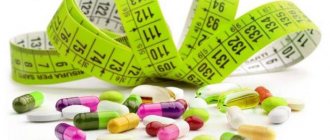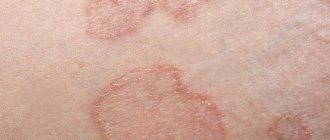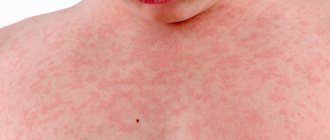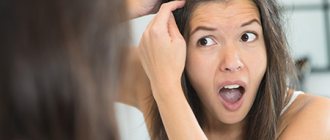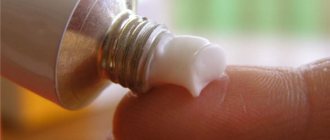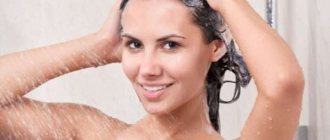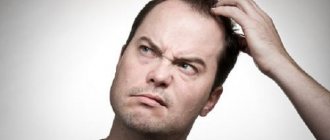Ringworm is a highly contagious human skin disease. This name combines a whole complex of various pathological inflammatory processes on the skin, the causative agents of which are fungi and viruses. The causes of occurrence, as well as the causative agents of some types of lichens, still remain only theoretical guesses. Only the occurrence of ringworm in humans has been proven by the introduction of 2 types of fungi into the skin. It is also convincing and substantiated that the appearance of shingles is associated with a herpetic infection. Since each type has a different origin, accordingly, the treatment of lichen in each type of person is different and is aimed at combating a specific pathogen - a specific type of fungus or virus. To differentiate any skin disease, you should contact a dermatologist, who will either make a diagnosis based on an examination, or you will need to take a scraping from the damaged area for a bacterial analysis. And only after clarifying the diagnosis, establishing the severity, depth of the lesion, duration of the disease, taking into account age and concomitant diseases, the doctor will prescribe the appropriate treatment for lichen.
Classification of medications
The causes of the pathology may vary, so the choice of medication is always made on an individual basis. Pityriasis versicolor can be caused by yeast-like fungi, while ringworm is caused by dermatophyte fungi. Shingles appears due to contact of the body with the Varicella-Zoster virus, pink - due to allergies.
The cause of lichen planus has not been precisely established. It is believed that metabolic problems, infections, allergies and genetic predisposition may be to blame.
Modern remedies for lichen can be divided into 2 main groups: local and systemic action. The first are gels and ointments, and the second are oral forms of drugs: these include tablets, drops, capsules. If a mild form of the disease is diagnosed, local medications are prescribed; if they are ineffective, pills are added. The following groups of drugs are used depending on the type of disease:
- antifungal;
- antiviral;
- immunomodulators;
- antibacterial;
- antihistamines.
A vaccine against shingles exists, but it is only used in animals. They don't make it for people.
What could cause an aggravation?
The infection may worsen due to a weakened immune system. In this case, virus particles that were already present in the body are able to gain a foothold in other cells, after which an avalanche-like reproduction begins.
Factors that disrupt the body’s protective functions may include:
- Insufficient amount of vitamins. This often happens due to an ill-conceived diet or therapeutic fasting.
- Difficult working conditions.
- Lack of sleep.
- Frequent stress. Nervous conditions can lead to the development of all sorts of diseases.
- Radiation exposure during therapy.
- Artificial suppression of immunity, for example, during organ transplantation.
- HIV infection.
Due to the aging of the body, relapses of lichen become more frequent. Elderly people suffer from exacerbations of the disease much more often than young people.
Antifungal therapy
Such drugs are used to treat pityriasis versicolor and ringworm. Some drugs act on several types of pathogens, others are active against certain types. There are drugs available in tablet form, while others are available as external agents. Ringworm is treated with the following medications:
- Griseofulvin. These tablets for lichen in humans stop the proliferation of the fungus. Their active substance accumulates in hair, nails and skin. The dosage is selected depending on the person’s weight. At first, take the drug 3 times a day. If the treatment is effective, this amount is reduced. The drug is not prescribed to pregnant women and children under 2 years of age. The course of treatment is 1-2 months.
- Orungal. The drug is aimed at destroying the cell membranes of microorganisms that cause disease. The active component accumulates in the upper layers of the epidermis and is removed after exfoliation along with keratinized particles of the epithelium. It is available in capsule and solution form. Prescribe the drug 1 time per day, 2 capsules. The duration of treatment is 7 days. The drug is contraindicated for people with kidney and liver pathologies.
- Fulcin. Effective tablets for ringworm in humans, but may cause allergic reactions in some patients. For this reason, it is recommended to first do allergy tests and only then recommend them to the patient. The daily dose is 500 mg. You can take it once or in parts. The duration of treatment depends on the extent of the lesion and varies from 2 weeks to six months. Advanced forms of the disease are treated for up to a year.
- Lamisil is active against various fungi. The key component of the drug is terbinafine. The daily dose is 250 mg, taken at night. The duration of treatment depends on the type of fungus and the degree of damage and varies from 2 weeks to 3 months. Experts do not recommend the drug for children weighing less than 12 kg. There are local forms of drugs, for example, Lamisil ointment. It is rubbed into the affected areas 2 times a day. Treatment is continued until clinical signs disappear.
- Thermikon is a cheaper alternative to Lamisil.
Ointments for treatment
Based on the type of disease and the manifestation of symptoms, ointments are selected for the treatment of lichen in children. When a pityriasis type disease occurs, external antifungal agents are used:
- Mycoseptin - contains the active substances undecylenic acid and its zinc salt, prescribed from two years of age.
- Mycozoral (Nizoral) - contains the active ingredient ketoconazole, the course of treatment is a week, not used for sick children under two years of age.
- Sulfur-tar ointment is safe for children, applied at night, can defeat the activity of fungi, disinfects and heals.
The following ointments help get rid of the vesicular type of disease caused by the herpes virus:
- Panavir is a gel ointment with antiviral and immunomodulatory properties.
- Viru-Merz – the course of treatment lasts five days.
- Castellani liquid – contains fucorcin, used in complex therapy.
Treatment of pityriasis rosea
Dermatosis of an infectious type of infection with a reduced degree of transmission of infection is called pityriasis rosea. To get rid of the lesion, no special treatment is needed, because it goes away on its own within a few months. To eliminate itching and repeated exposure to the skin, use:
- Tsindol - contains zinc oxide, is safe even for newborns, removes wet areas and disinfects them, reduces burning, but there is a minus - an unpleasant odor.
- Fluorocort, Lorinden - ointments containing glucocorticosteroids, prescribed only by a doctor for intense itching and rapid spread of spots throughout the body, when the child has had time to swell.
Treatment of ringworm
The most common type of lichen is ringworm, which affects the skin of the entire body and the scalp. To treat spots, they are treated in the morning with an alcohol tincture of iodine, then applied with antifungal agents. They produce an ointment for ringworm that will help cope with the disease:
- Zalain, Lamisil, Exifin - kill fungi, used once a week.
- Clotrimazole, Funginal - applied to damaged skin, the course of treatment is a month.
- Exoderil, Lotseril - used twice a day for 14 days.
- Tar, salicylic, sulfur - safe even for babies, applied in a thick layer before bed for a month.
To prevent the infection from spreading throughout the body, it is recommended to cut the hair on the head weekly and wash it with soap. When spots quickly invade the skin, doctors prescribe antifungal drugs (Itraconazole, Terbinafine), which are characterized by the absence of toxic effects and show effective results against parasites. Within a quarter after getting rid of symptoms, the child must meet with a dermatologist for monitoring.
Treatment of lichen planus
A chronic inflammatory disease localized to the mucous membranes, nails and skin, presenting with itchy rashes, is called lichen planus. It is characterized by a long course, alternating exacerbations with periods of subsidence of symptoms. It very rarely affects a child’s body, therefore, when it occurs, the following is prescribed:
- Gistan, Fenistil - non-hormonal ointments with plant extracts, improve skin condition, block immune allergic inflammation.
- Tacrolimus, Pimecrolimus are non-hormonal anti-inflammatory ointments that reduce swelling and discomfort.
- Salicylic acid – exfoliates the skin, giving growth to new healthy cells, reduces redness.
- Solcoseryl - heals wounds, erosions, is used for a course of two weeks with a single application to the affected areas per day.
Treatment of herpes zoster
A viral disease localized in the nervous system and skin is herpes zoster. It has other names - Zoster virus, herpes zoster. Activated due to weakened immunity, chronic diseases. For treatment it is used:
Lichen versicolor and its treatment
This form of lichen is activated by fungi. The drugs Termicon and Lamisil are used to treat the disease. Specialists can prescribe:
- Itraconazole It is effective against most known types of fungi. Their daily dose is 200 mg. The course of treatment is 1 week.
- Mycozoral. The active ingredient is Ketoconazole. This remedy is complex and copes well with yeast-like fungi, pathogens of trichophytosis and microsporia. The duration of treatment is individual. There is an ointment that needs to be rubbed into the skin. Treatment with local remedies continues for a month.
- Fluconazole. It is available in capsules and is aimed at stopping the growth of fungi. The course of treatment varies from 2 to 4 weeks. Take 300 mg at a time or 2 capsules of the drug once a week. The drug is contraindicated in pregnant women.
- Nystatin. An antifungal drug that is used to treat infections with yeast-like fungi. These microorganisms are active on the surface of the skin and mucous membranes of the pharynx and mouth. The course of treatment is 10−14 days. Take the drug 3 times a day in an individual dosage. The amount of the drug per dose depends on the affected area. There are local forms of the drug that can be used by pregnant women.
- Pimafucin. The drug destroys most known types of fungi. Treatment duration is 1 week. Take 1 tablet 4 times a day. The local form of the medicine is recommended for use by pregnant and lactating women.
Contraindications
Any vaccination is prohibited if the general state of health is impaired. This can cause complications, including death. Vaccinations are contraindicated in the following cases:
- The animal is weakened by illness.
- Hyperthermia.
- The presence of symptoms of an acute infectious disease.
- Suckling puppies.
- Pregnant bitches.
Vaccines are not compatible with immunosuppressants such as antibiotics. It is not advisable to act without consulting a competent specialist and identifying possible diseases.
Antiviral agents
Antiviral drugs are used for herpes zoster and lichen rosea. It is advisable to take them in the first 72 hours from the onset of the disease - this will speed up recovery and avoid complications. Antiviral drugs for lichen:
- Acyclovir. Its action is selective and directed at cells modified by the virus. The course of treatment is 5 days. Every 6 hours take 4 tablets. For children, the dosage is selected on an individual basis, depending on weight. Acyclovir is also available in ointment form.
- Valtrex is taken 1000 mg 3 times a day. It is not recommended for patients with liver and kidney pathologies.
- Valaciclovir. The duration of taking medications is 7 days. The patient takes 1000 mg every 8 hours. The course of treatment is a week. Children under 12 years of age are contraindicated. Elderly patients are advised to drink plenty of fluids during treatment.
- Famvir. The dosage for taking the medicine per day is 750 mg. It can be taken in equal parts throughout the day or drunk all at once. This medicine for lichen is taken for people for 7 days. The drug has analogues: Famacivir and Menaker.
Forecast
Most often, the prognosis for treatment is favorable; recovery can occur within a few weeks, provided that there is no bacterial or fungal infection.
After suffering from the disease, immunity is developed, but it is unstable. That is, the risks of getting sick again always exist. It is always necessary to eat right, lead a healthy lifestyle and strengthen your immune system. If there is a tendency to allergic reactions, it is necessary to completely eliminate the appearance of the allergen in the patient’s life.
Do not forget about the rules of hygiene, use only your own products and objects, because in rare cases, pityriasis rosea can be transmitted from person to person.
[youtube.player]
Ancillary drugs
It was not possible to establish the exact causes of lichen planus and lichen rosea. Scientists today only have assumptions, so patients with this diagnosis use medications to alleviate the overall course of the disease and achieve a faster recovery.
Antihistamine tablets are aimed at combating allergies, itching and irritation in damaged areas. Dermatologists usually prescribe Suprastin and Loratadine tablets. Take them before bed. The course of treatment is 2 weeks.
Antibiotics are used when a bacterial infection is associated with the disease - this is indicated by the formation of abscesses. Typically, broad-spectrum agents are used: they eliminate inflammation and stop the spread of bacteria. The duration of therapy and dosage are selected by the doctor individually. The following drugs are usually prescribed:
- Tetracycline;
- Erythromycin;
- Olethetrin.
Immunomodulators are another aid that increases the body's resistance to infections. Strengthening the immune system allows you to neutralize the negative consequences of the immune response to infection.
Among the immunomodulators there are:
- Polyoxidonium. It is widely used for viral and fungal infections. The drug must be taken 3 times a day, 1 tablet, dissolving it in the mouth.
- Cycloferon starts the process of interferon synthesis, which speeds up recovery. The daily dose is 450 mg, which corresponds to three tablets. They should be taken at a time. The course of treatment is 40 tablets.
- Delagil. An anti-inflammatory and immunosuppressive drug used for lichen planus. Dose per day - 400 mg.
- Immunal. The basis of the drug is echinacea extract. It is taken one tablet 3 times a day for at least a week. Analogs of the drug are Estifan and Immunorm.
- Lycopid. A new generation immunomodulator, which is prescribed 2 times a day, 2 mg.
- Plaquenil. Anti-inflammatory drug for the treatment of lichen planus. The daily dose is 400 mg. After the condition improves, switch to a dosage of 200 mg. The daily amount can be taken immediately or divided into 2 doses.
How to treat lichen in a child. How to treat lichen in a child
With timely treatment, lichen is easy to treat. The complex of treatment measures includes quarantine, physiotherapy, treatment with systemic and local medications. Treatment requires mandatory cleaning of the living space every day - the fungus is transmitted through spores. Frequently changing bed and underwear and carefully ironing them with a hot iron will not hurt. Treatment can last from two weeks to several months (if treatment is not started on time).
Ointment
One of the effective methods of treating the disease is the use of. To protect your child from developing allergies, you must first apply the product to a small area of skin and watch the reaction after 2 hours. The ointment may cause redness of the skin and burning. The product is applied to the affected area 2 times a day. This group of medications includes drugs such as Isoconazole, Naftifine, Bifonazole, Mikozolon, Terbinafine. There are these types of ointments:
- riodoxolic;
- salicylic;
- zinc;
- florenal;
- sulfur-tar.
Zinc ointment
A simple formulation of an effective zinc ointment for shingles includes a mixture of petroleum jelly and zinc oxide. Effective for many dermatological diseases such as eczema, pink or ringworm. You need to smear the product on the areas until the signs of the disease disappear (up to six times a day). The ointment copes well with superficial lesions in the initial stages of the disease, without penetrating deep into the layers of the epidermis. Zinc ointment has many healing properties:
- dries;
- gradually restores the skin;
- acts against inflammation.
Pills
Complex treatment is more effective and helps to quickly cope with the cause of lichen. A child's dose of drugs should be less than an adult's, and only a doctor should treat lichen in an infant. You need to contact your pediatrician to avoid the consequences of incorrect dosage
Doctors recommend paying attention to common medications that are prescribed for the main and accompanying treatment with tablets:
- Antifungal drugs - tablets with an antimycotic effect are indicated for ringworm (Griseofulvin, Orungal, Lamisil, Termicon or Terbinafine, Mycozoral, Fluconazole).
- Antihistamines are effective against lichen planus and rosea (Cetrin, Suprastin, Loratadine, Claritin, Tavegil).
Sprays for different types of diseases
External forms of drugs are marketed in spray form. The active ingredient in most products available on the market is terbinafine. It acts against yeast-like fungi and dermatophytes. To use the spray, first clean the surface of the skin and dry it. After this, the ringworm remedy is sprayed over the affected areas. During use of the drug, adverse reactions may occur in the form of peeling, redness and itching. Other sprays that can be seen in pharmacies:
- Lamisil;
- Miconazole;
- Kanesten.
There is no exact dosage for sprays. They are sprayed so that the skin becomes moist. Use the ringworm spray for people twice a day. Improvements are visible from the first day, but treatment should be continued until complete recovery.
Levomekol
To quickly relieve inflammation, remove redness of the skin and alleviate severe itching, doctors prescribe an effective and inexpensive Levomekol ointment for lichen in humans. The medicinal product resembles a paste in its consistency and color; it is an independent treatment or part of a complex therapy. Its protective properties are an effective prevention when the symptoms of pityriasis rosea have completely disappeared
Here's what's important to know about this ointment:
- composition - the active component, being a tissue regenerator, is called dioxomethyl tetrahydropyrimidine;
- indications – purulent wounds, bedsores, herpes, purulent acne, trophic ulcers, various forms of hemorrhoids, infectious and inflammatory processes of the skin;
- method of application - the patient needs to lubricate the affected areas of the body with a thin layer until completely absorbed, the duration of intensive therapy is up to 10 days;
- contraindications – fungal skin infections, psoriasis, eczema, increased sensitivity of the body to active substances; the occurrence of side effects is possible.
Suspensions, pastes and solutions
These external forms of drugs are not always used exclusively to destroy pathogens. They can be used as regenerating agents and antiseptics. Solutions are very convenient for treating lichen on the head. Compared to ointments and creams, they are quickly absorbed and do not lead to hair contamination. They are applied to smooth areas of the epidermis. We are talking about such means as:
- Clotrimazole. An antifungal solution is used against ringworm and pityriasis versicolor. Rub a few drops twice a day into the affected areas.
- Yoddicerin. It includes iodine and glycerin. The drug dries out the scales, restores the epidermis and leaves no traces behind. The tampon is moistened in the medicine and then applied to the damaged skin.
- Fukortsin. An antimicrobial and antifungal solution that should be used to treat diseased areas 2 times a day before applying the ointment. This drug is inconvenient to treat lichen on the face, as it turns the skin red.
- Sangviritrin. A solution that destroys germs is used to wipe the skin 2 times a day.
- Tsindol. The suspension, which has a drying effect, also has an antiseptic effect. Used in the treatment of pityriasis rosea.
- Pasta Lassara. This is a complex action drug for skin pathologies. The active component of the product is salicylic acid. It fights inflammation and restores the skin. Apply the paste 2 times a day.
- Lamisil. The lotion is used to treat the skin. The product forms a film on the surface of the epidermis, which lasts for several days.
Pharmacies offer a wide range of drugs to combat skin diseases, but only a doctor can find out what is the best way to treat lichen. Independent actions are undesirable, as they can be harmful to health.
Vitamins
In the process of treating pityriasis rosea, we must not forget about restoring the patient’s body’s defense mechanisms. This is why it is advisable to take vitamins. Along with ointments and tablets, they significantly strengthen the immune system, enhance the regenerative abilities of the skin and have a beneficial effect on it.
Vitamins A and E are of great importance in the complex of therapeutic measures aimed at restoring the health of the skin. They can be taken either independently or as part of vitamin-mineral complexes that also contain B vitamins, ascorbic and nicotinic acids, zinc, iron and others. microelements.

